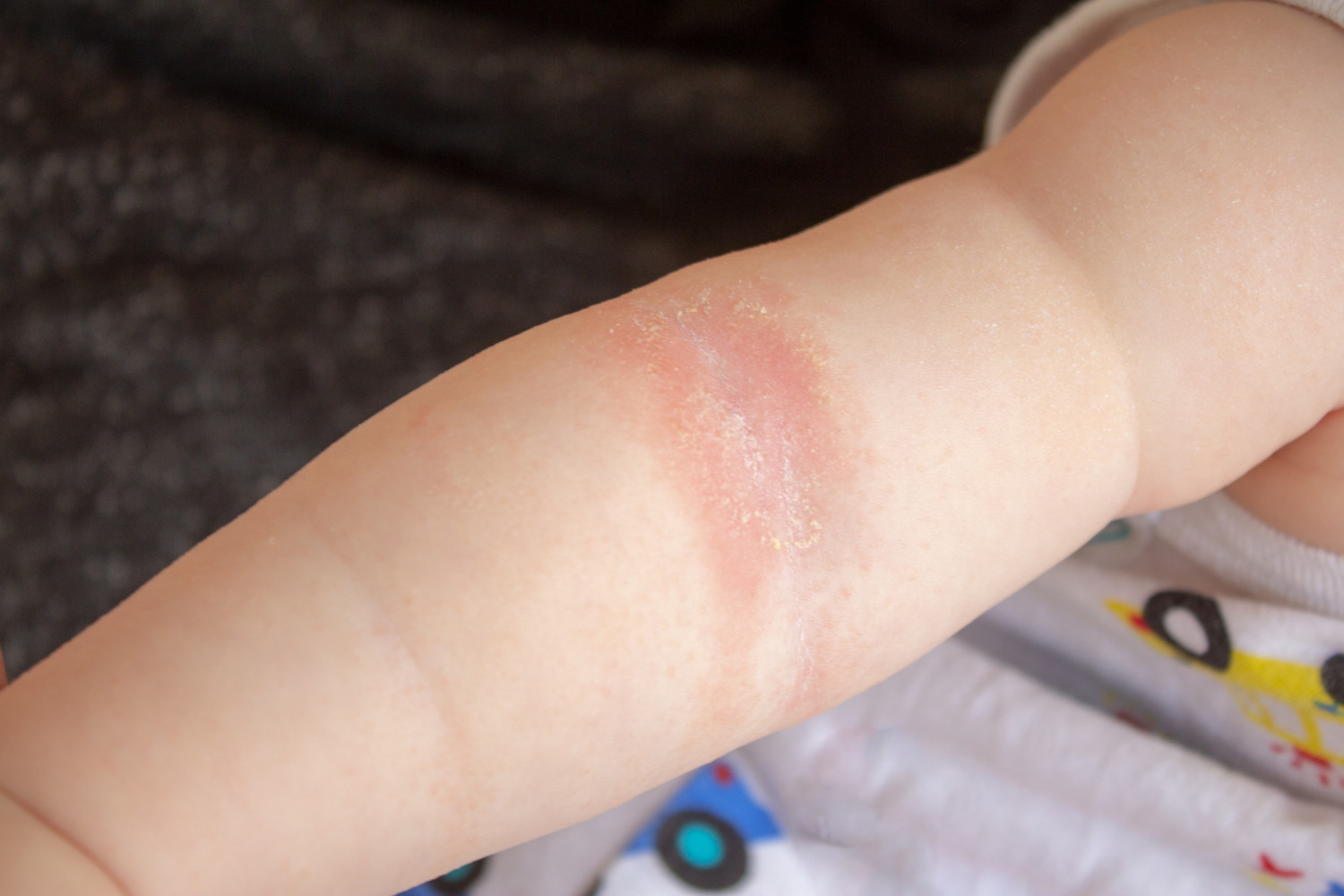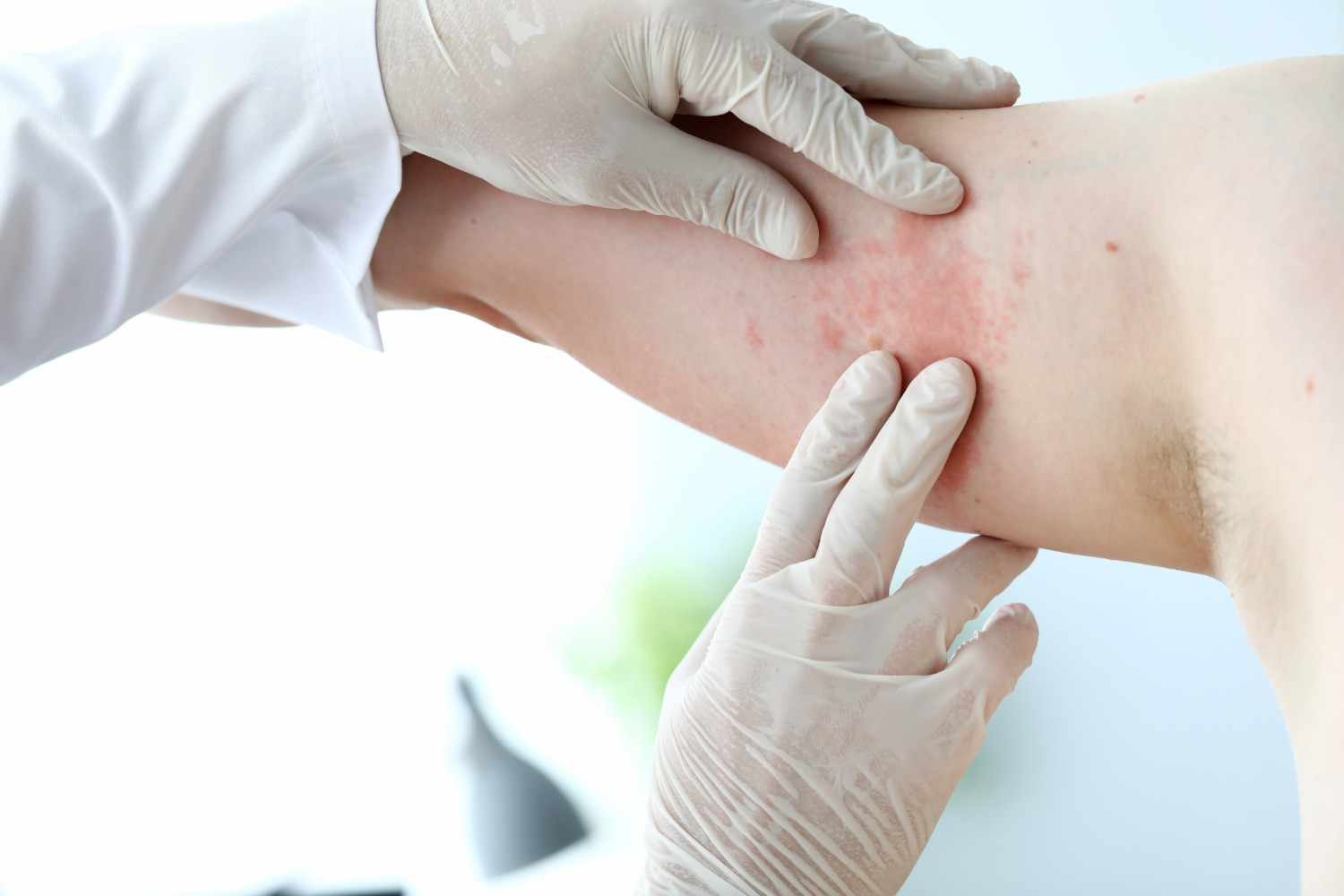The products and services mentioned below were selected independent of sales and advertising. However, Simplemost may receive a small commission from the purchase of any products or services through an affiliate link to the retailer's website.
You might associate heat rash with babies, but it affects adults too. Also known as prickly heat or miliaria, it often rears its head during hot, humid weather. Perspiration gets trapped under the skin due to blocked pores, resulting in a range of uncomfortable symptoms.
Knowing how to prevent heat rash is key to avoiding the itch! Once you know what causes heat rash, you’ll be able to stop it from happening in the first place.
Different Types Of Heat Rash
Heat rash might look a little like sunburn, but it can occur on skin that hasn’t been exposed to sunlight. It often manifests as miliaria crystallina — clear, fluid-filled blisters and bumps on the top layer of the skin. This is the mildest form of heat rash, says Mayo Clinic.
Another type of heat rash occurs deeper in the skin. It’s called miliaria rubra, but it’s most commonly known as prickly heat due to the itching or “prickling” of the affected skin. This is typically accompanied by small raised spots on the skin. It looks like a red rash on light skin, but it may be less obvious on darker skin. If the bumps become inflamed and filled with pus, it’s known as miliaria pustulosa.
The least common type of heat rash is miliaria profunda, which affects a deeper layer of skin called the dermis. It’s characterized by hard, flesh-colored lesions, a bit like goose bumps.
According to Mayo Clinic, adults usually develop heat rash in skin folds and where clothing runs against the skin and causes friction. Infants tend to be affected on their neck, shoulders and chest.

How To Treat Heat Rash
Most of the time, heat rash clears on its own and only the most severe cases require medical care. In a Michigan Health blog, Michigan Medicine dermatologist Dr. Jennifer Mancuso advises wearing loose-fitting clothing to resolve mild forms of heat rash in a few days. If itching is an issue, she suggests applying an anti-itch lotion, like Sarna or a topical steroid like hydrocortisone.
A simple home remedy to calm the itching or prickly feeling, apply something cold, like a damp cloth or ice pack wrapped in a tea towel, to the affected area of skin for up to 20 minutes. Try not to scratch the rash as this is likely to make it worse; tapping or patting it can help bring relief.
If these steps don’t help to relieve symptoms, Mancuso advises seeing a doctor for evaluation and further treatment. And definitely seek medical attention if heat rash symptoms last more than a few days, or if there are signs of infection, like increased pain, swelling or redness on the affected area, a fever or chills, or swollen lymph nodes in the armpit, neck or groin.

How To Prevent Heat Rash
Knowing how to prevent heat rash can help you to avoid pain and discomfort further down the line. First of all, don’t wear too many clothes! In warmer weather, go for lightweight, breathable fabrics, like cotton. And keep it loose — tight clothes are more likely to irritate the skin. This is even true in winter, so Mayo Clinic advises not overdressing your kids during colder months. Kids only need the same layers that you’re comfortable in yourself.
Other ways to keep your skin cool, inside or outside, include staying in the shade and using a fan to keep the air moving. Don’t forget to pay the same attention to your bedroom, which should be cool and well ventilated at night. You can also take cool baths or showers, and make sure you drink plenty of fluid to avoid dehydration.
Mancuso also recommends changing out of sweaty clothes quickly after you exercise and using an antiperspirant deodorant — not just in the underarms but in other skin folds, like thigh and groin folds and under the breasts.
This story originally appeared on Simplemost. Checkout Simplemost for additional stories.


